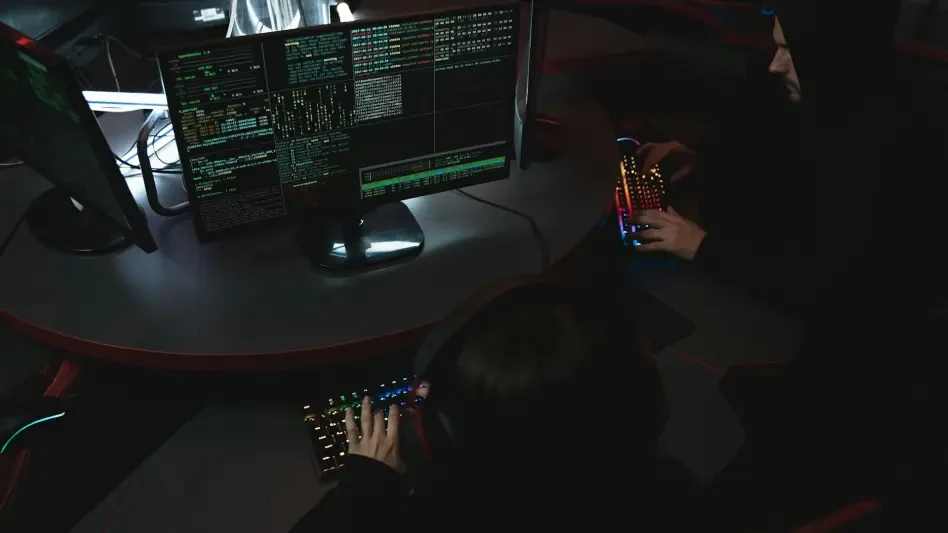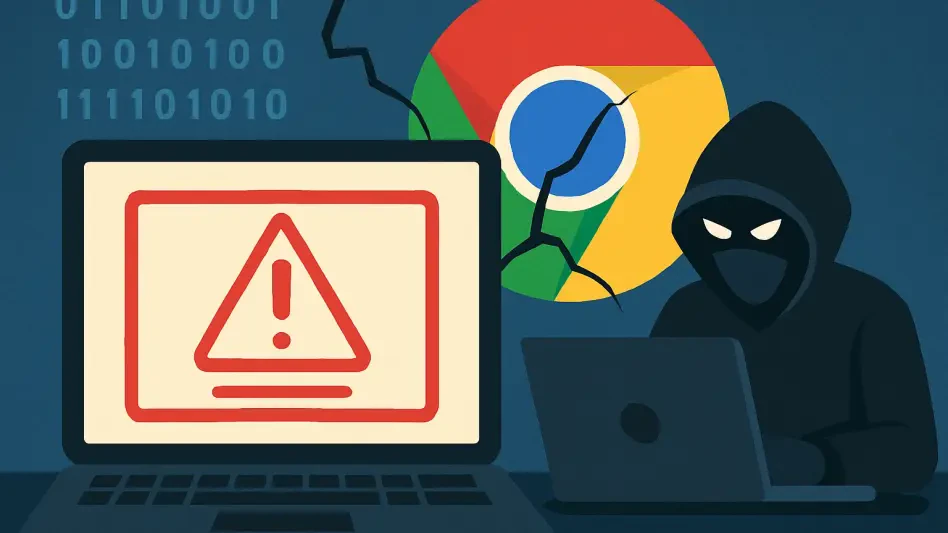The manufacturing industry has become a focal point for cyber threats, posing significant risks to operational technology (OT) systems and the broader digital landscape. Recent years have witnessed a dramatic rise in cyberattacks targeting this sector, involving a variety of threat actors ranging from hacktivists to state-sponsored groups. As technology evolves, so do the tactics and objectives of these cyber adversaries. Notably, the period between 2024 and 2025 marked a 71 percent surge in activities targeting manufacturing enterprises, highlighting a pressing need for vigilance and advanced security measures across the industrial spectrum.
Rising Threats and Strategies in the Manufacturing Sector
The Surge in Cyberattack Activities
The manufacturing sphere has seen a pronounced increase in cyber threats, primarily due to the diversification and ambition of threat actors exploiting vulnerabilities. Over 29 active threat actors were identified during a recent period, with cybercriminals and ransomware gangs, notably RansomHub, being predominant. Such groups, with 78 reported victims, engage in data theft operations that suggest a shift in the traditional motives of cybercriminals. Whereas financial gain was once the primary agenda, these actors now seem more intent on causing operational disruption, aligning their objectives with broader geopolitical motivations.
This era has also been defined by a significant trend in attacker dwell time. Intruders maintain access to compromised environments for extended periods before detection, utilizing stealth to maximize damage. Such evolving techniques signify a need for improved detection capabilities and underscore the challenge of identifying threats effectively. Additionally, there is a growing prevalence of using legitimate cloud services by these perpetrators, enabling them to blend with standard network traffic and escape conventional security measures. This adaptability demands heightened scrutiny and advancement in security protocols focused on cloud services to mitigate the disguised infiltration attempts.
Divergence in Attack Techniques
The complexities of cyber threat techniques continue to unfold with the utilization of custom tools and legitimate system utilities. Groups like Black Basta employ specialized malware such as BRUTED, while RansomHub uses the Betruger backdoor, which facilitates prolonged and clandestine cyber campaigns. The orchestration of these tools, coupled with living-off-the-land techniques reliant on legitimate utilities, minimizes the chances of detection, enabling attackers a persistent presence in their target systems.
Further examination indicates that hacktivists have shifted toward employing ransomware techniques, as state-sponsored entities increasingly target OT systems within manufacturing sectors. This transformation of tactics reflects a growing trend where political and strategic motivations drive cyberattacks, rather than monetary incentives alone. Such maneuvers necessitate a reevaluation of cybersecurity strategies, especially when threats are intertwined with broader political landscapes and the potential for significant economic disruption.
Technological Evolution Introducing New Vulnerabilities
Impact of Emerging Technologies
The integration of cutting-edge technologies such as digital twins, industrial IoT, 5G, and AI in manufacturing processes introduces expansive challenges in safeguarding system security. These innovations, while offering enormous potential for efficiency and productivity, simultaneously widen detection gaps and magnify vulnerabilities that threat actors readily exploit. The increased complexities and interconnected nature of modern manufacturing environments present a lucrative target for cybercriminals, prompting an urgent need for adaptive and comprehensive security frameworks.
As the sector incorporates more advanced technological solutions, the potential attack surfaces expand, thereby offering new vulnerabilities for exploitation. Misconfigurations in cloud infrastructures and emerging technologies have become a focal point for cyber intrusions. The industry’s rapid transition to these technologies demands rigorous security assessments, ensuring that novel technologies do not become cracks in the cybersecurity armor, allowing threat actors unwarranted access.
Tactics, Techniques, and Procedures Employed
A deep dive into the initiatives taken by cybercriminals outlines a clear reliance on Initial Access Brokers, responsible for providing secondary adversaries access to compromised networks. This practice exemplifies a sophisticated approach to facilitating subsequent malicious activities within infiltrated systems. High-risk vulnerabilities are routinely exploited within commonly used technological solutions. Applications such as VPNs, remote access solutions, and file transfer utilities have become frequent targets of exploitation, serving as entry points that enable attackers to delve deeper into organizational networks.
Data exfiltration remains a pivotal concern, with cybercriminals siphoning off intellectual property and sensitive personal data, including Social Security numbers, banking credentials, and identification documents. The magnitude of these thefts can be vast, with several terabytes of data often being stolen. This underscores the necessity for organizations to implement robust security controls and data protection protocols, ensuring the integrity and confidentiality of critical information assets, while preparing to counter the increasing sophistication of data-compromising tactics.
Adapting to Future Threat Landscapes
Evolution of Attack Methodologies
Adapting to the evolving threat landscape means that cybercriminals are now utilizing legitimate remote monitoring and management tools to execute commands and establish persistence within compromised environments. This trend illustrates the increasing sophistication of attackers’ strategies, as they endeavor to maintain control while masking malicious activities from security surveillance. Similarly, EDR (Endpoint Detection and Response) bypass techniques are gaining momentum, replacing traditional obfuscators, portraying a heightened approach to deceit that challenges conventional detection mechanisms.
The increasing engagement of threat actors with Ransomware-as-a-Service (RaaS) models has positioned the manufacturing industry as a prime target for malicious campaigns. A prominent example is RansomHub, leading breaches in 78 manufacturing entities globally. Other notable RaaS syndicates like LockBit, Akira, Play, and Clop further illustrate the resilience and evolution of ransomware operations despite international law enforcement counter-efforts. The adaptability and code reuse strategies employed by these groups form the persistent threat ecosystem, underscoring a need for dynamic and preemptive security measures.
Geopolitical Influences and State-Sponsored Initiatives
Beyond traditional cybercrime, hacktivist factions such as Handala, Kill Security, CyberVolk, and Cyber Army of Russia Reborn have pivoted to incorporate ransomware techniques targeting OT. This shift in approach aligns with major geopolitical conflicts, where disruption supersedes financial motivations. Similarly, state-sponsored actors like APT28 and Volt Typhoon are intensifying their campaigns within OT environments in manufacturing, signaling a blend of espionage and operational motives. Emperor Dragonfly exemplifies this duality, where espionage is accompanied by financially driven ransomware strategies.
Future predictions foresee the persistence of such attacks, influenced by an entwining of geopolitical dynamics and the proliferating familiarity with OT networks among attackers. The manufacturing sector’s increasing reliance on emergent technologies will likely be mirrored by growing cyber incursions, capitalizing on potential system misconfigurations and technological vulnerabilities. Organizations necessitate a forward-looking approach, embracing strategic cybersecurity investments that account for evolving adversarial techniques and persistent threat entities.
Building Resilience in Manufacturing Cybersecurity
Developing Robust Security Frameworks
Manufacturing organizations must prioritize the establishment of robust, adaptable security frameworks to counteract the complex cybersecurity challenges they face. This involves embracing comprehensive asset inventories, implementing stringent patching protocols, especially for exposed systems such as VPNs and RDP, and instituting tight access control measures like multi-factor authentication. Enhancing visibility through improved logging and detection capabilities focused on anomaly detection can help identify and neutralize threats that employ living-off-the-land techniques to remain undetected.
Network segmentation between IT and OT environments must also be enforced, accompanied by vigilant monitoring to detect discrepancies quickly. Supply chain risk management also requires significant attention, ensuring that strict security standards are adhered to by vendors while continuously monitoring third-party risks. Furthermore, ensuring the availability of immutable, offline backups is crucial for minimizing the impact of ransomware incidents, with regular recovery tests cementing preparedness.
Incorporating Threat Intelligence and Risk Assessments
The manufacturing sector has emerged as a primary target for cyber threats, presenting considerable risks to both operational technology (OT) systems and the wider digital infrastructure. This industry, a crucial component of global economic frameworks, has seen an alarming uptick in cyberattacks recently. These cyber intrusions are spearheaded by a diverse group of threat entities, including hacktivist collectives and government-backed cyber operatives. The rapid pace of technological advancements has facilitated these adversaries in refining their tactics and redefining their goals. Particularly striking is the sharp rise in cyber hostility between 2024 and 2025, with activities directed at manufacturing companies soaring by a staggering 71 percent. This trend underscores an urgent need for stringent vigilance and the adoption of sophisticated security protocols industry-wide. Manufacturing entities need to fortify themselves against these cyber threats, recognizing the evolving threat landscape requires constant updates to security measures and proactive threat intelligence to safeguard their digital and operational assets. As the industry expands into the future, cybersecurity must be integrated as a fundamental aspect of corporate strategy, ensuring that all digital operations remain resilient against increasingly sophisticated cyber adversaries.








